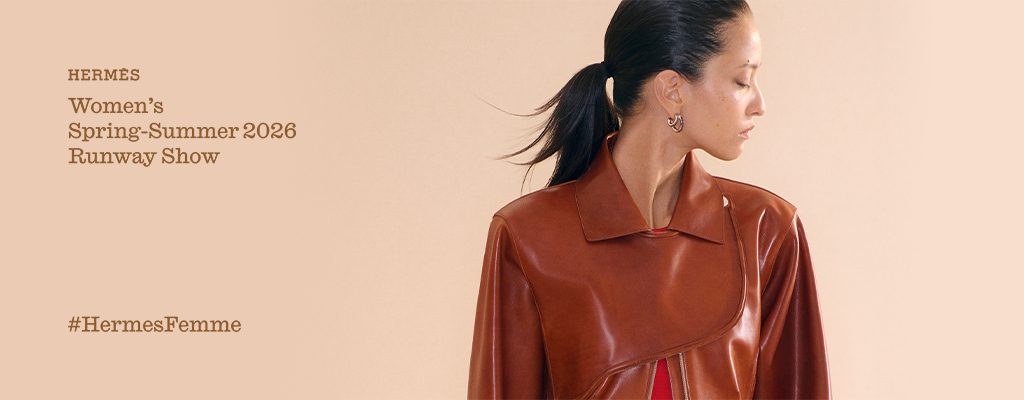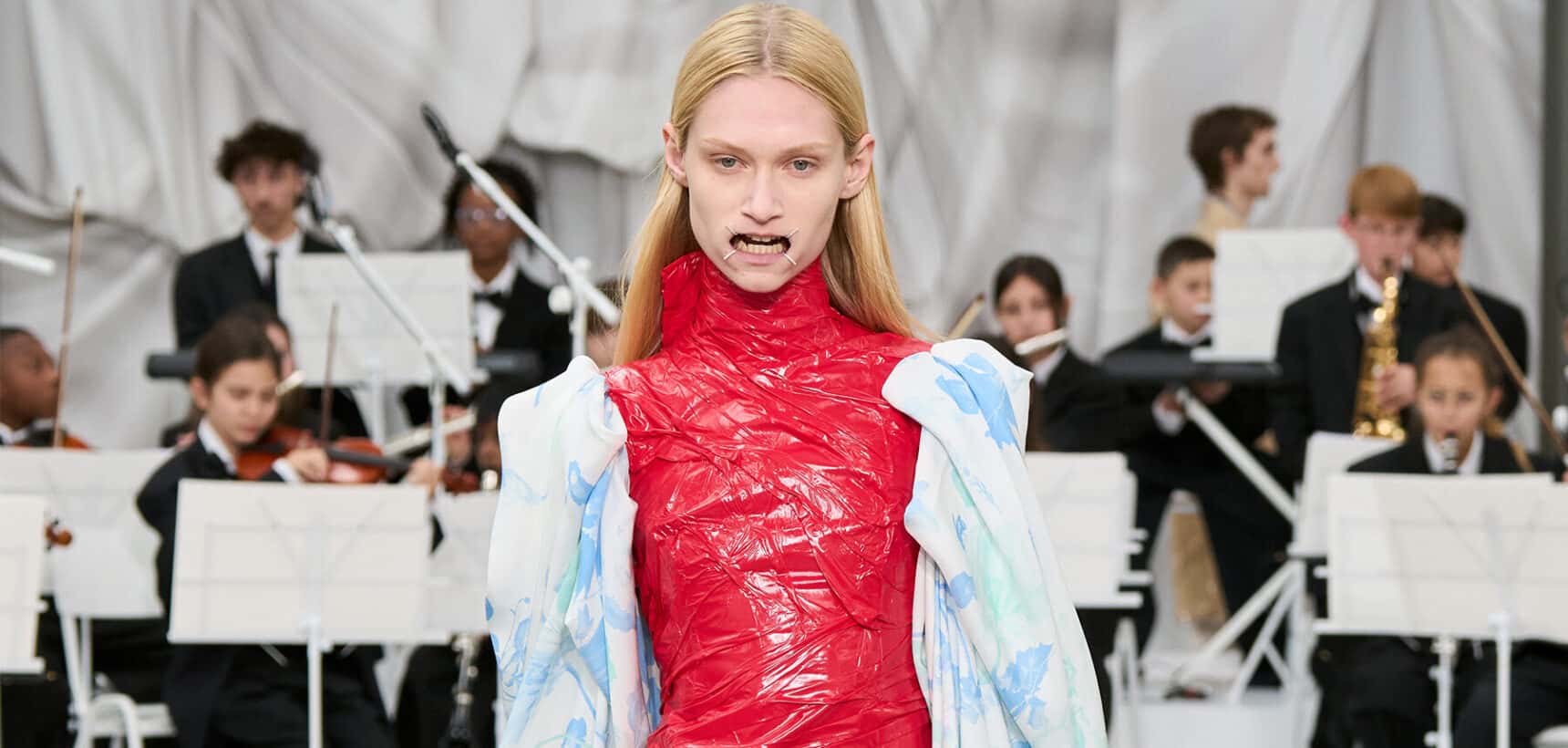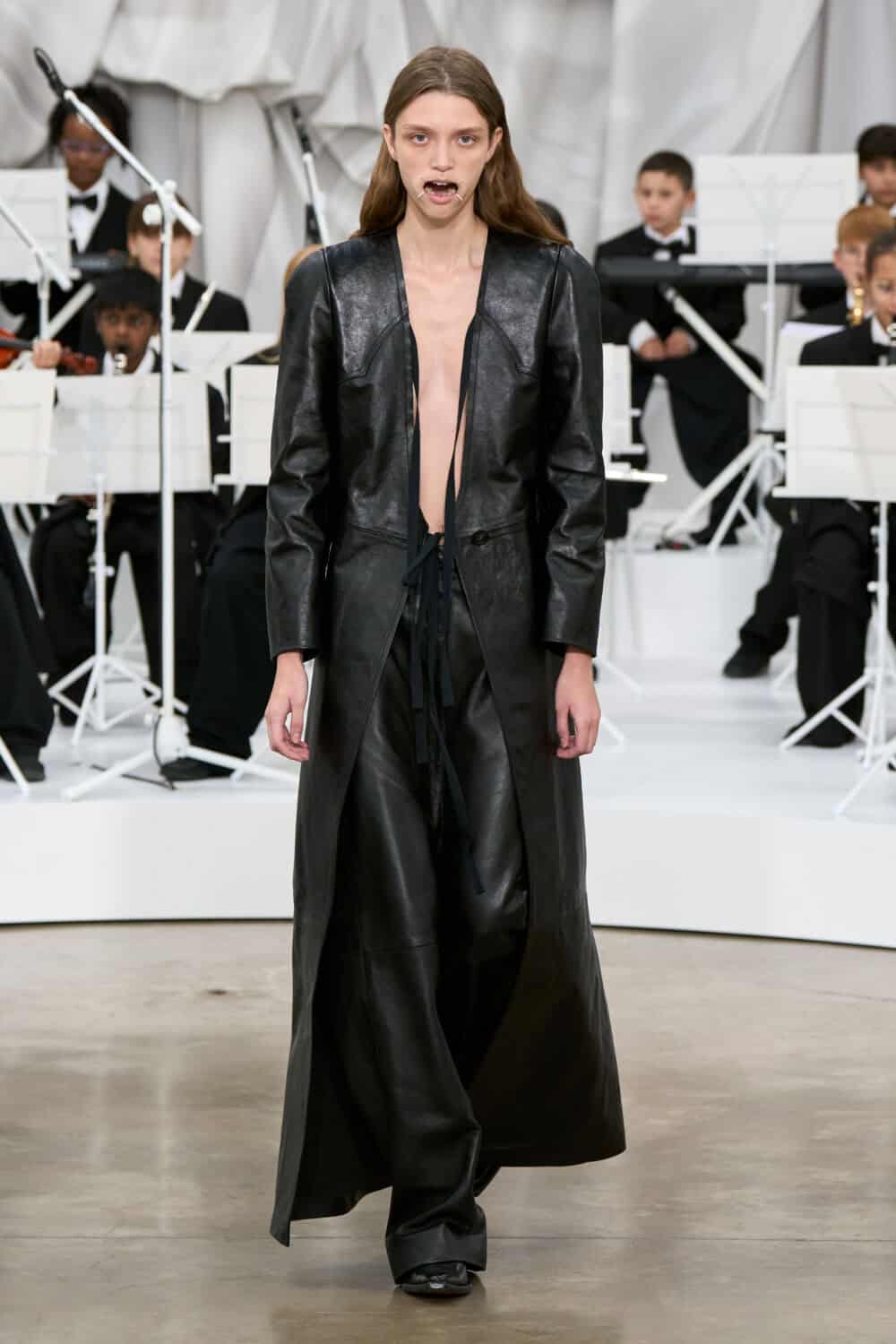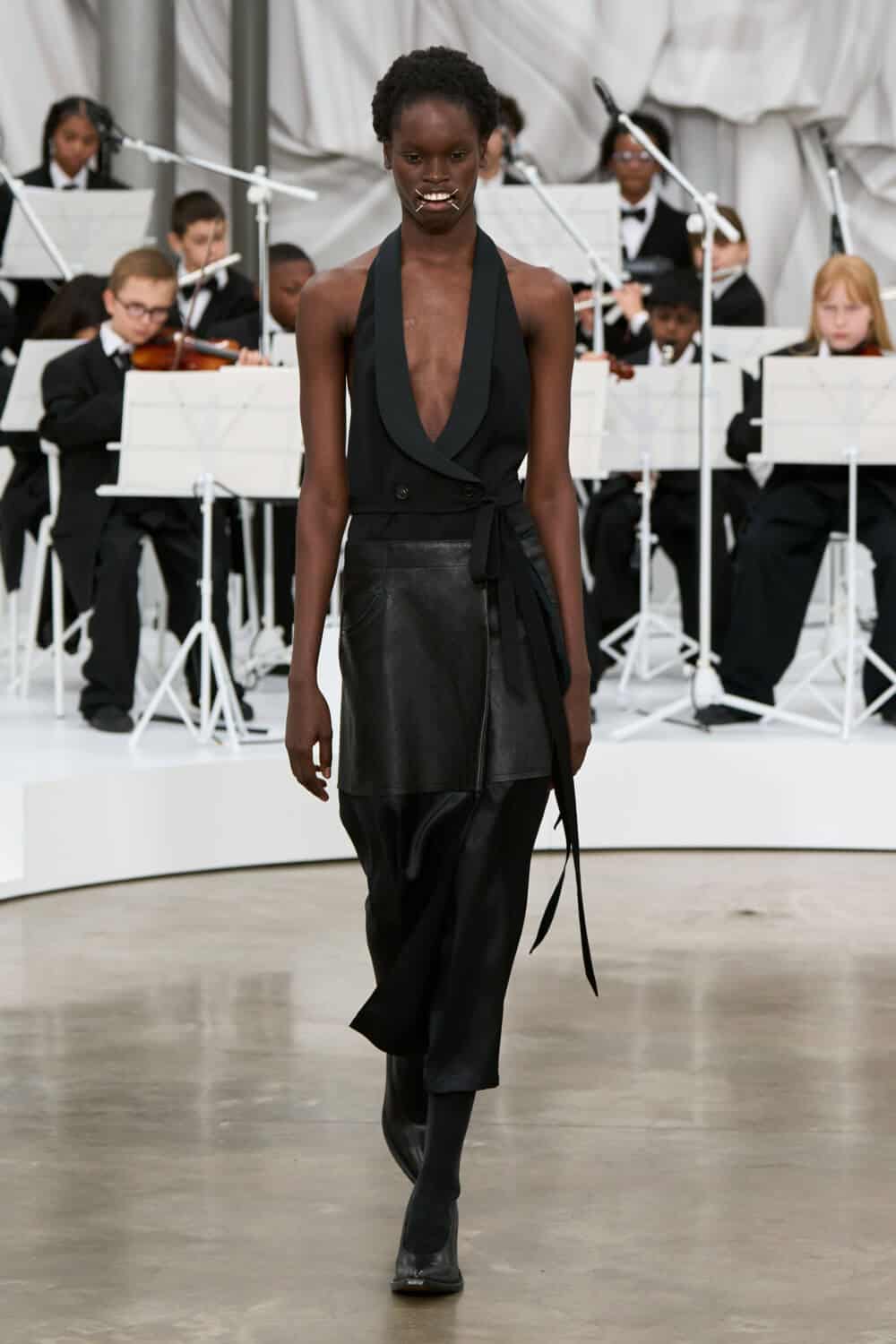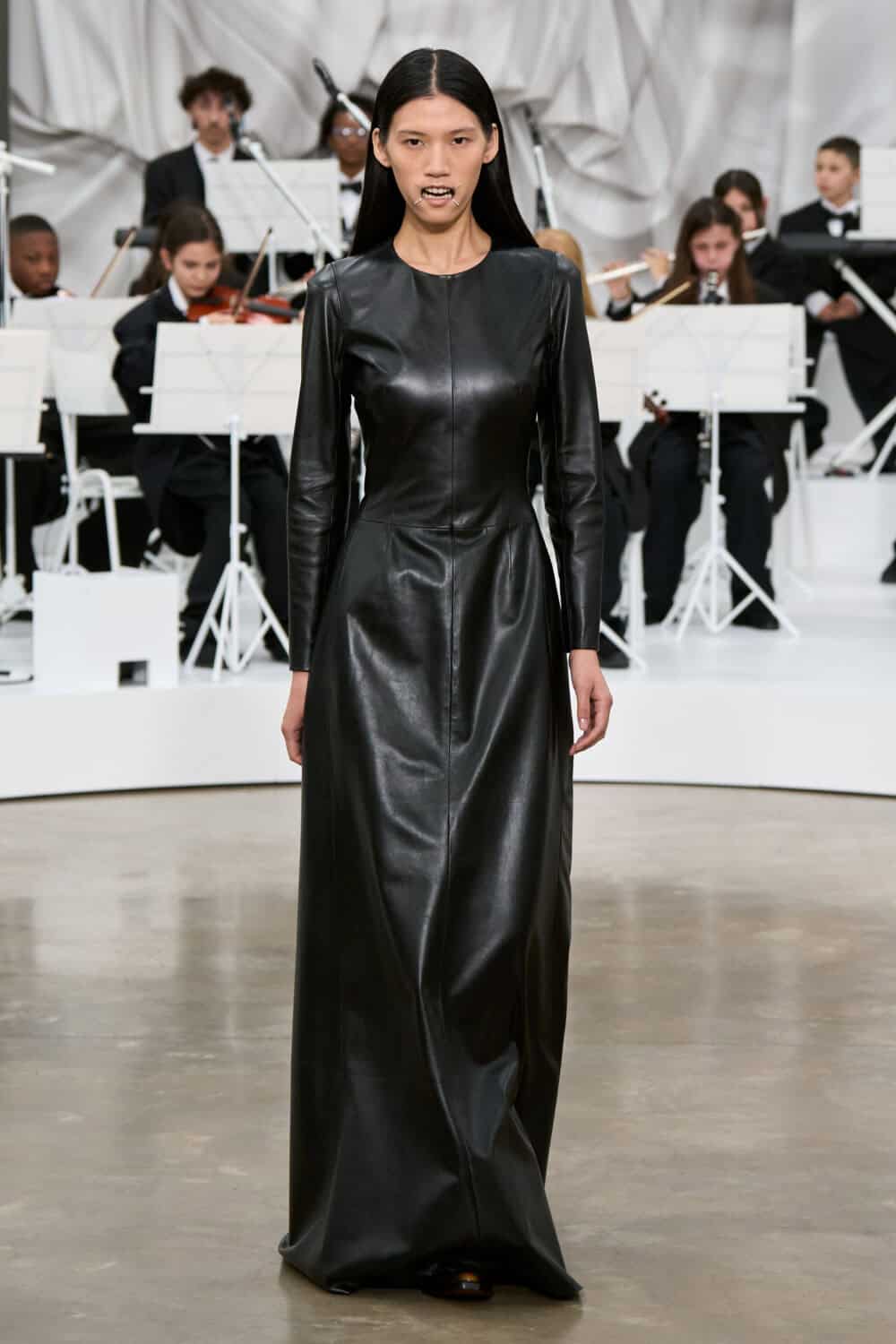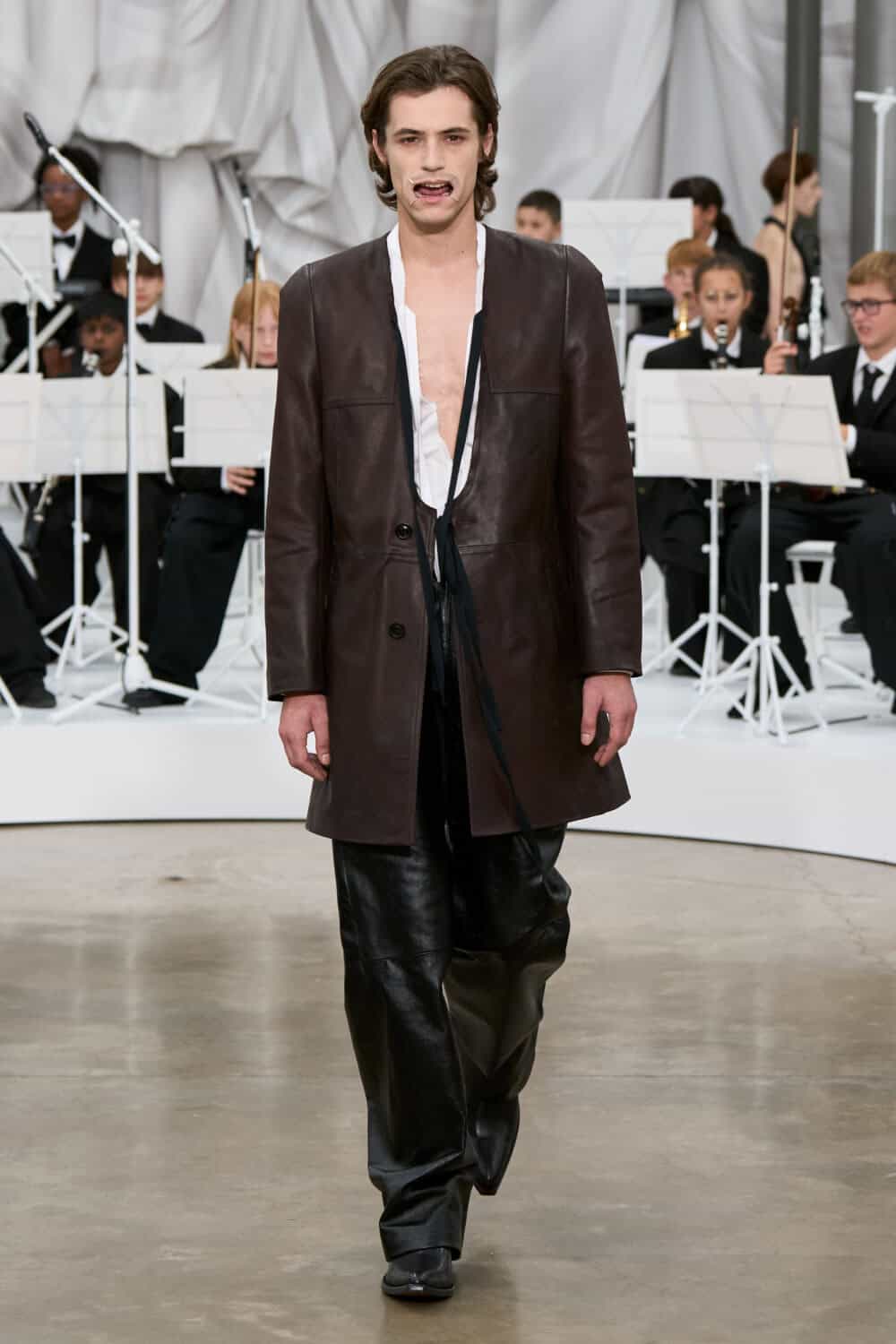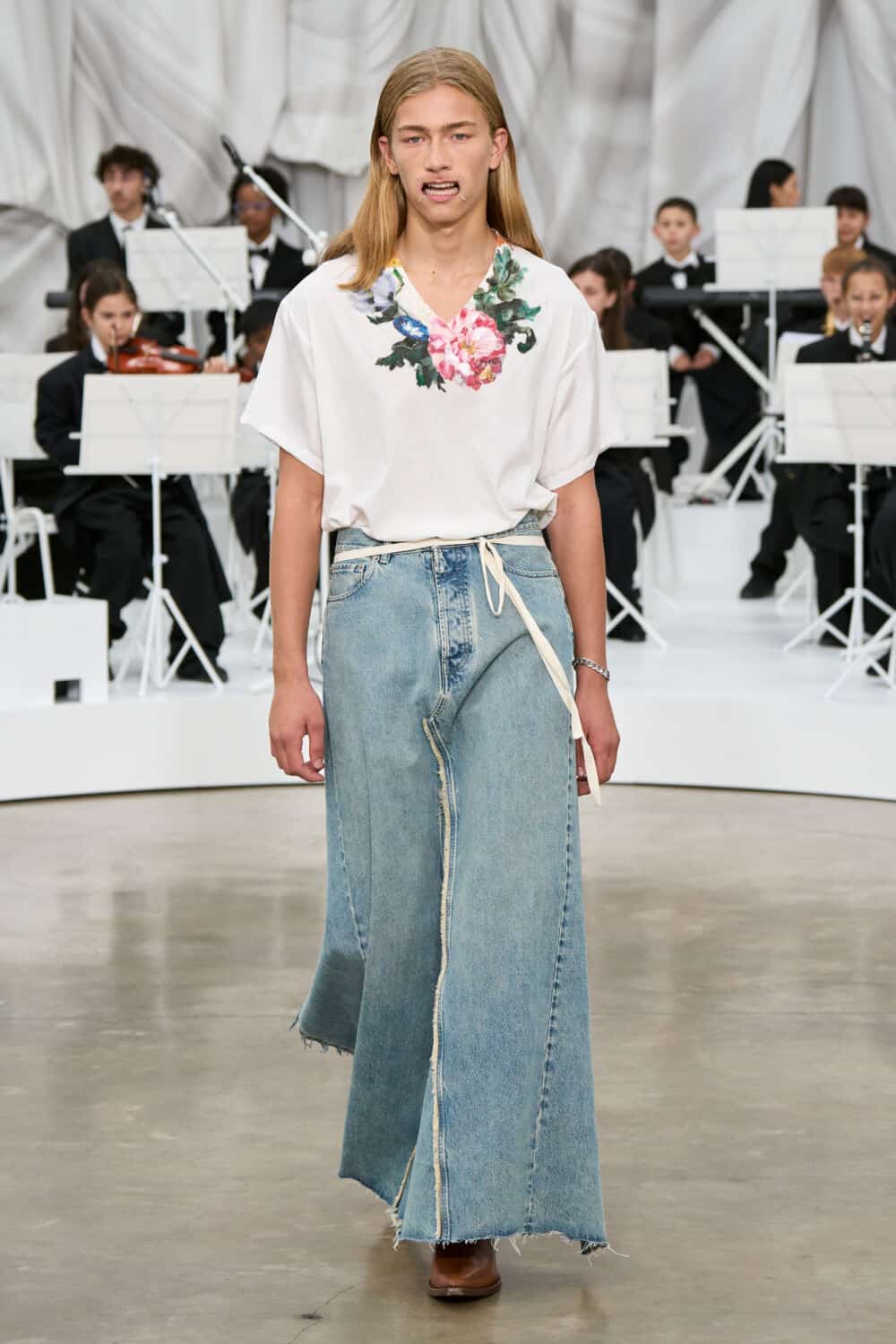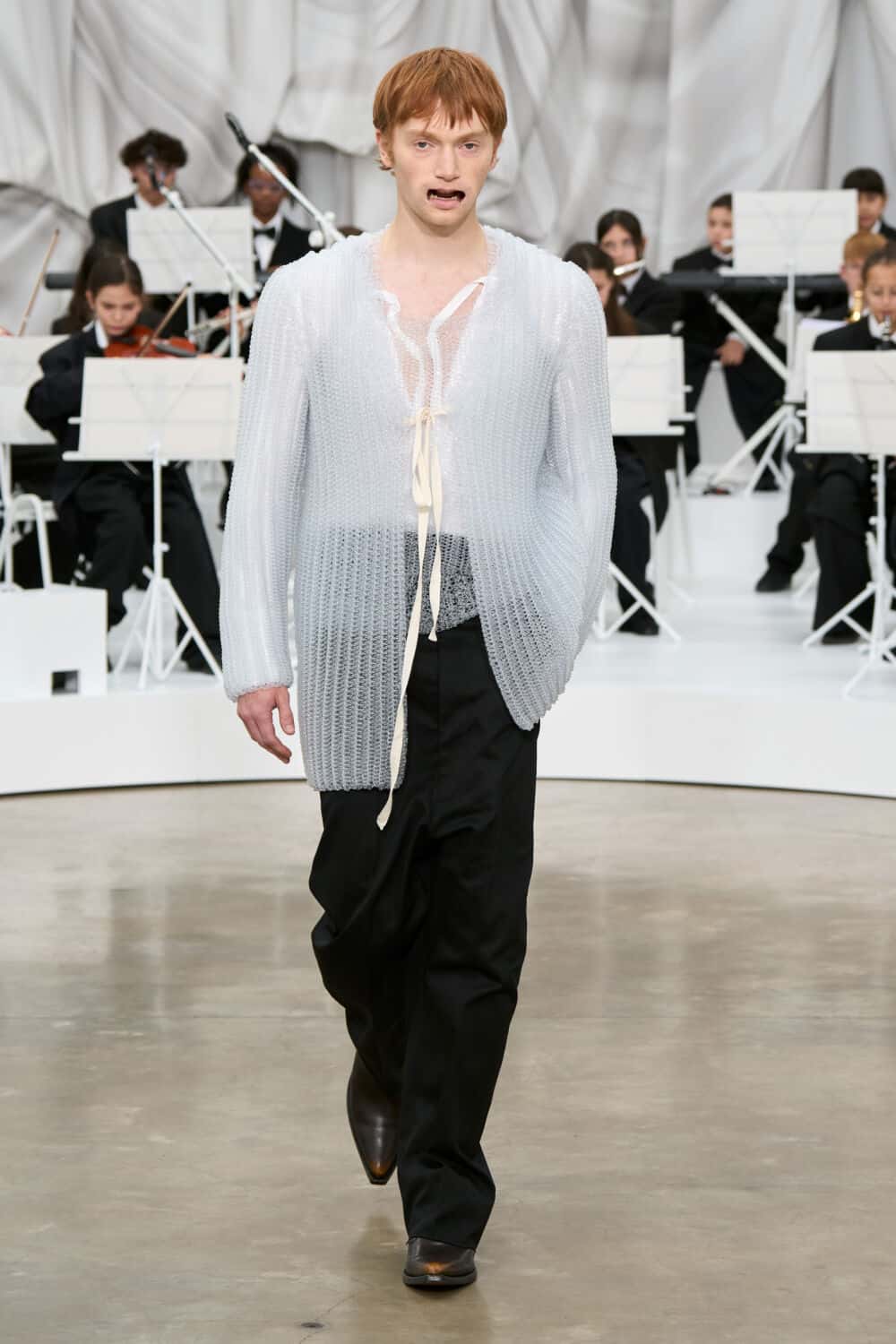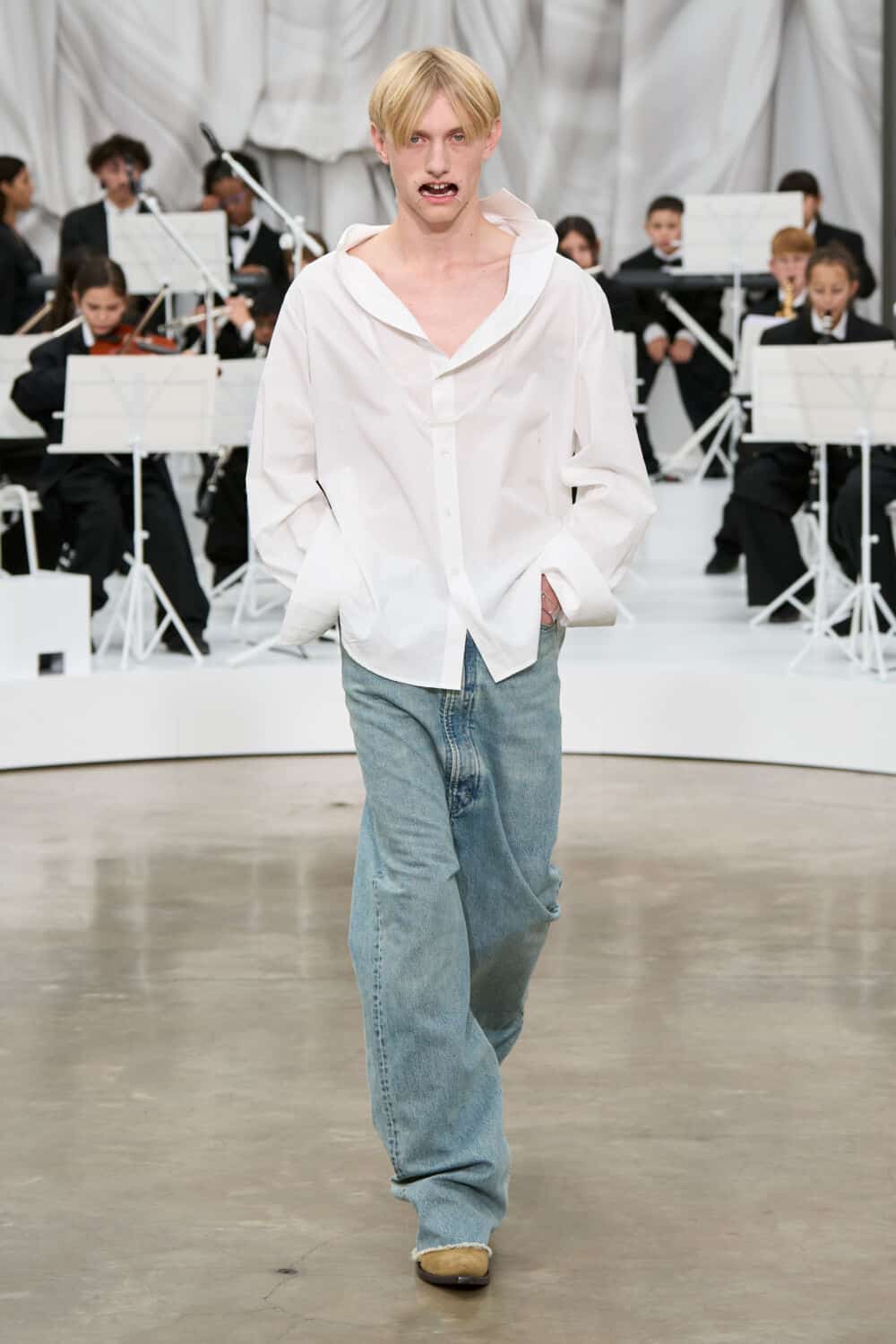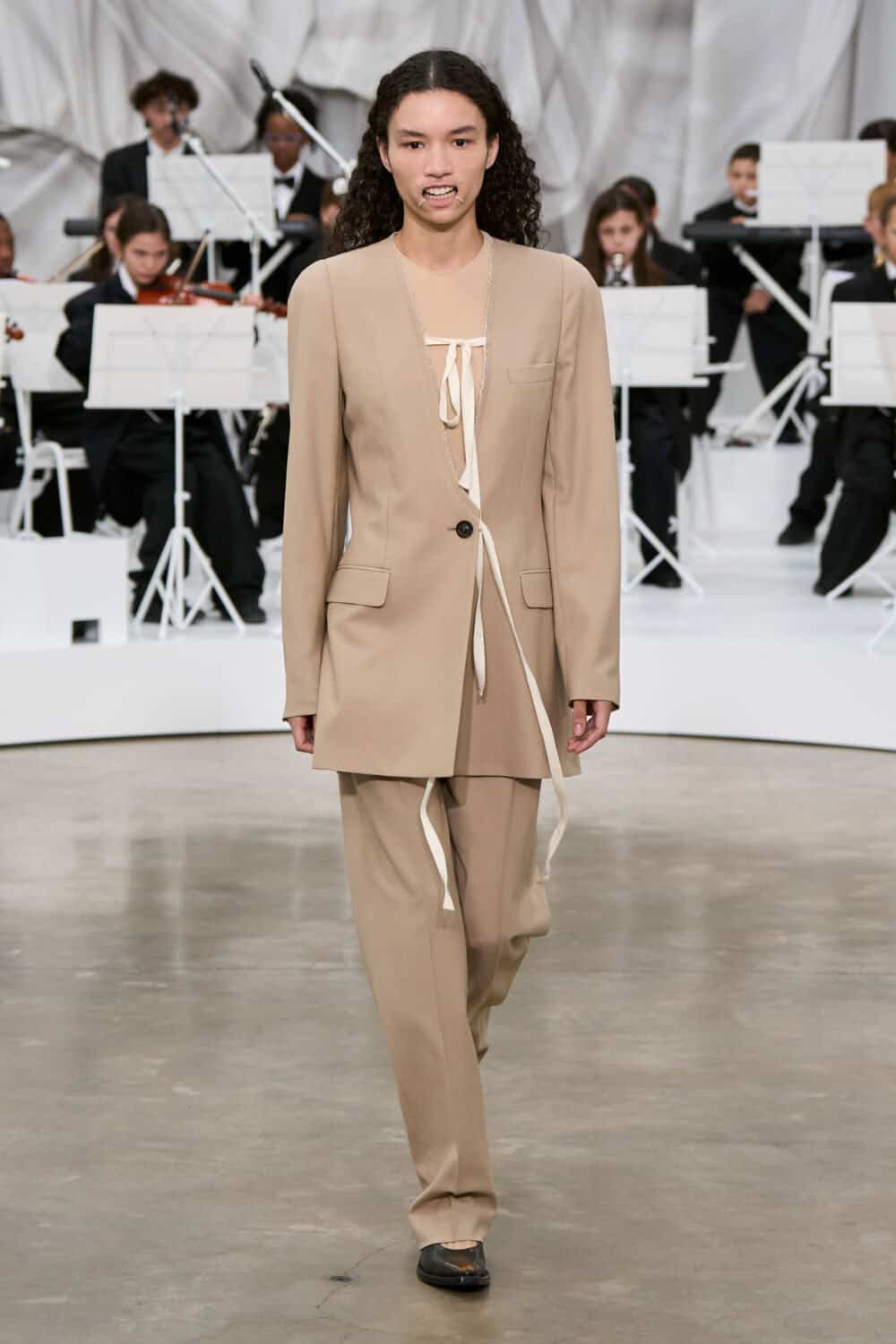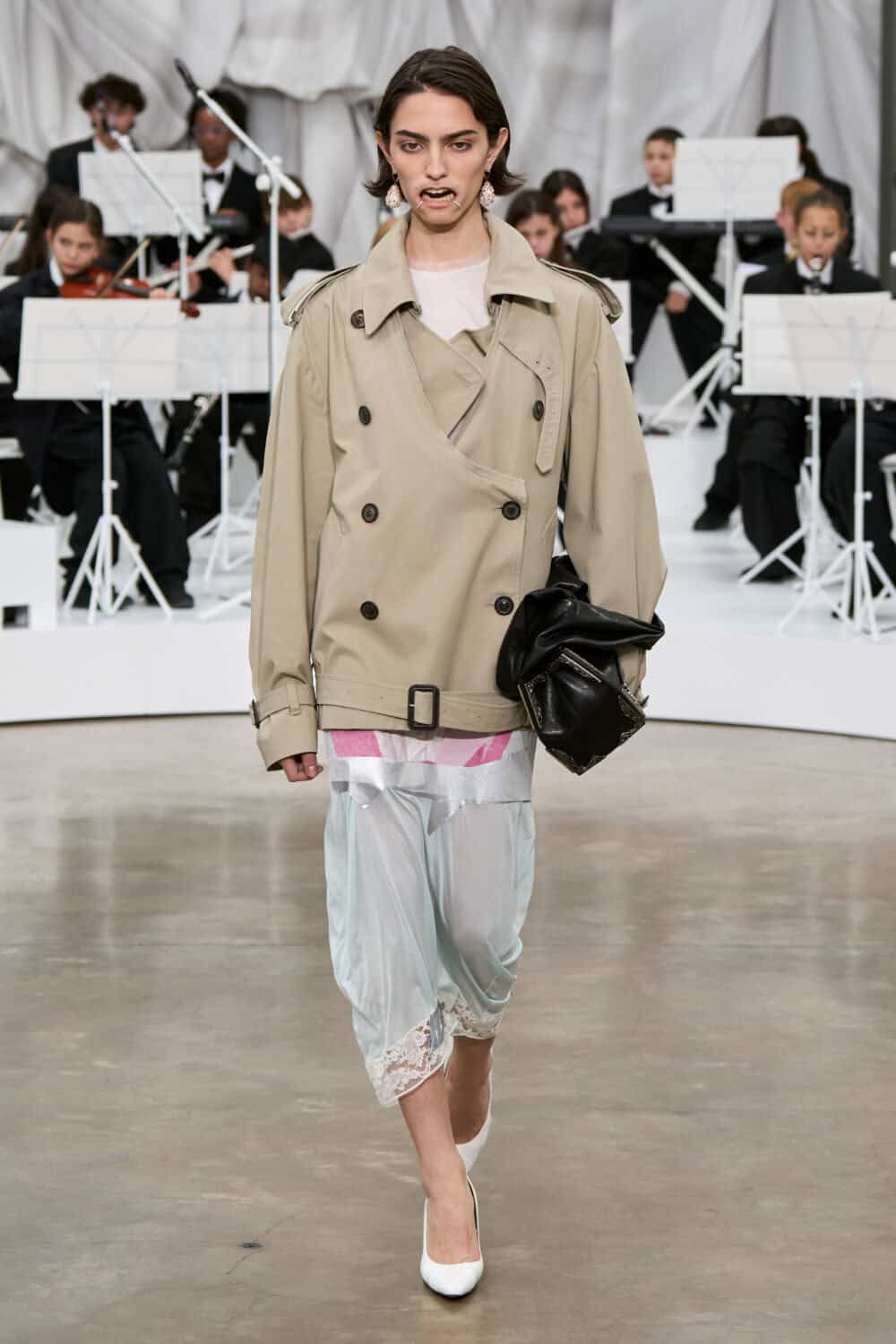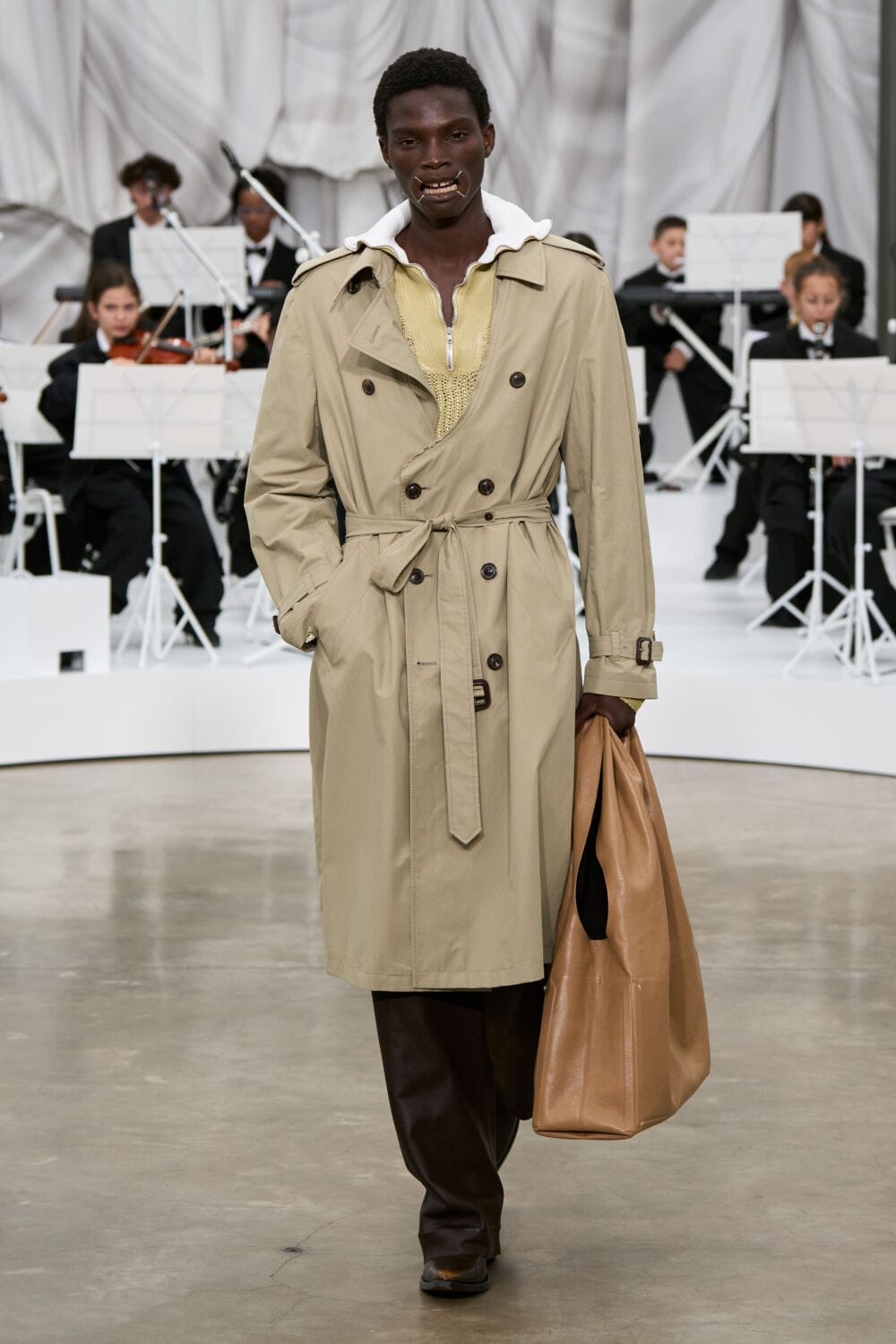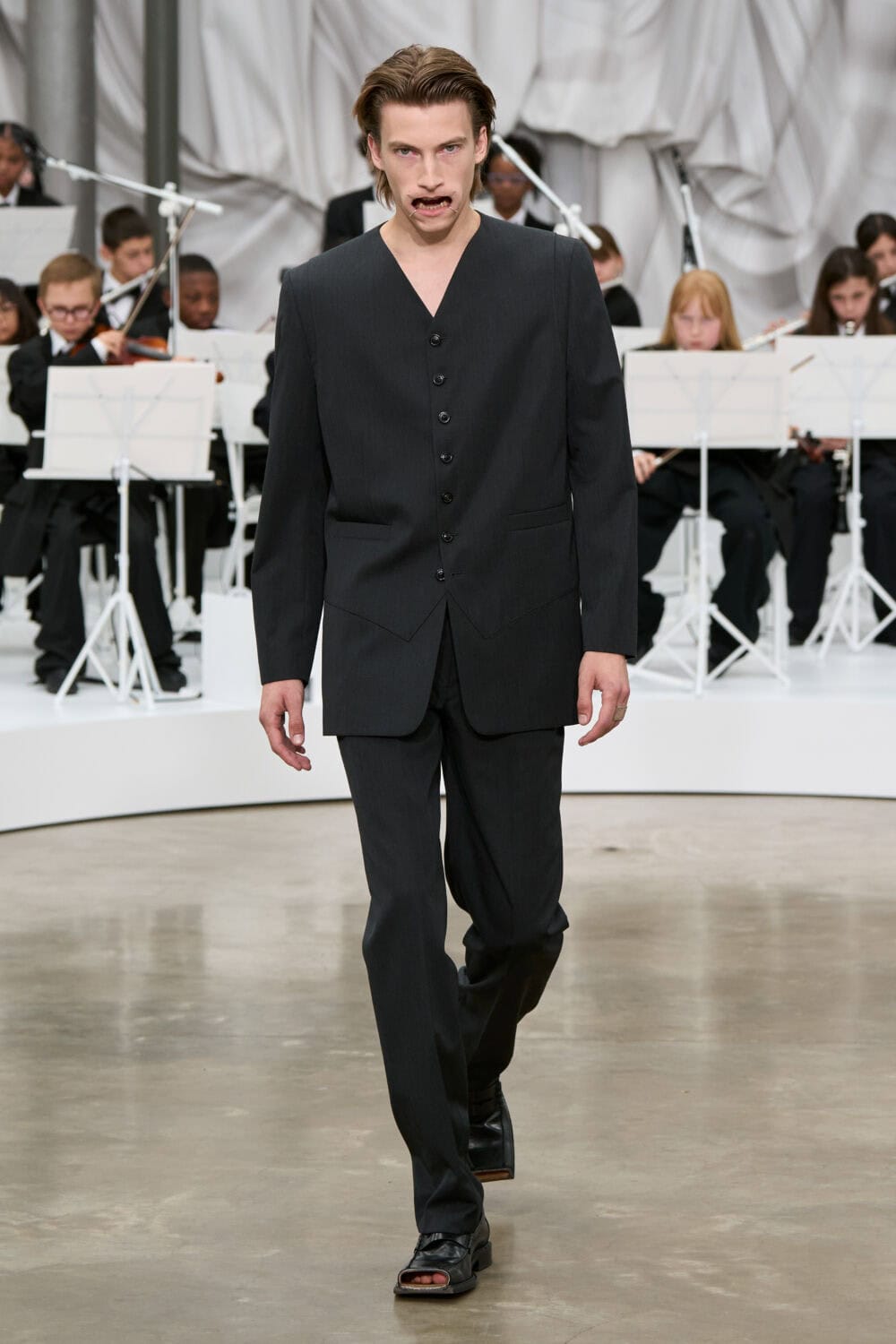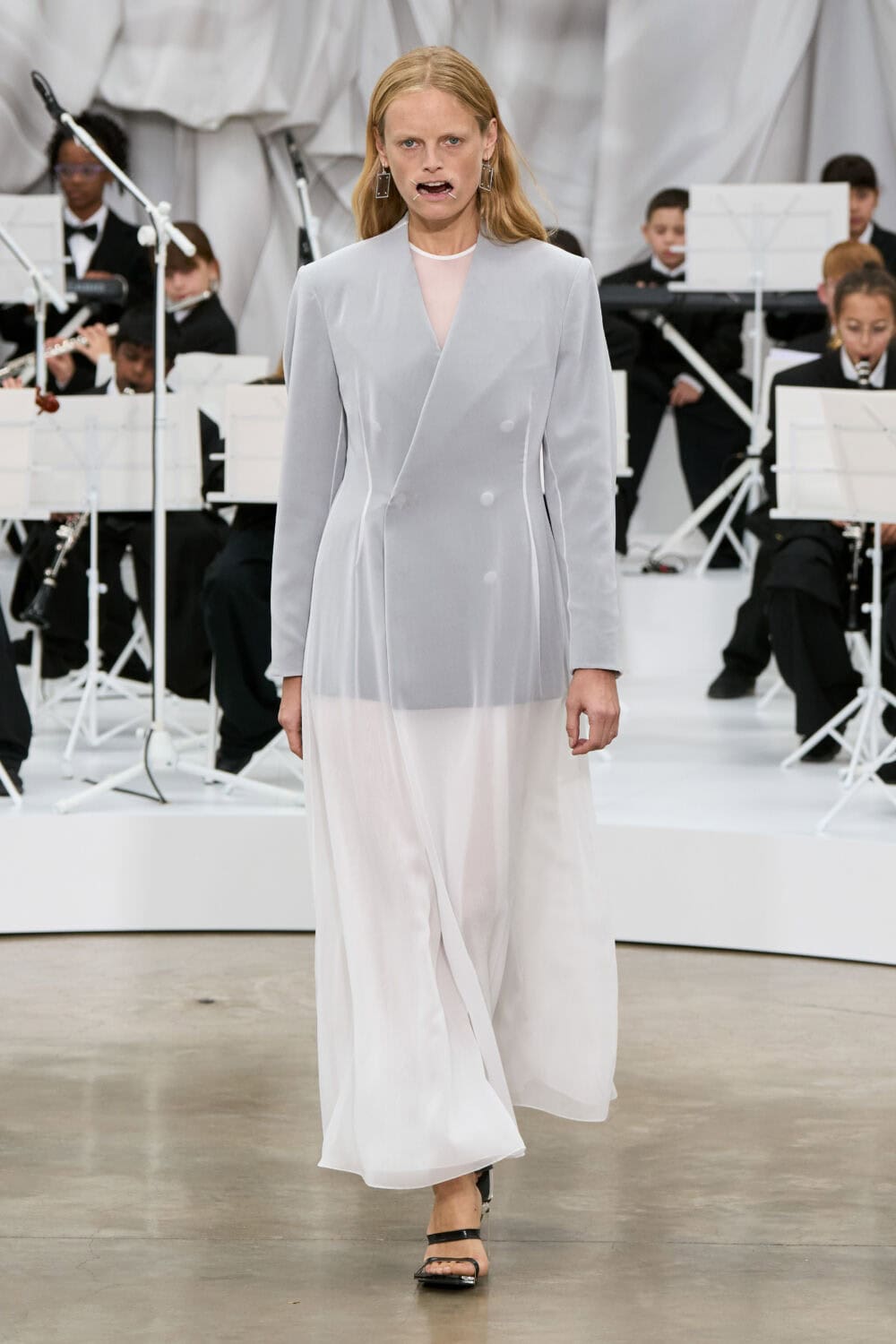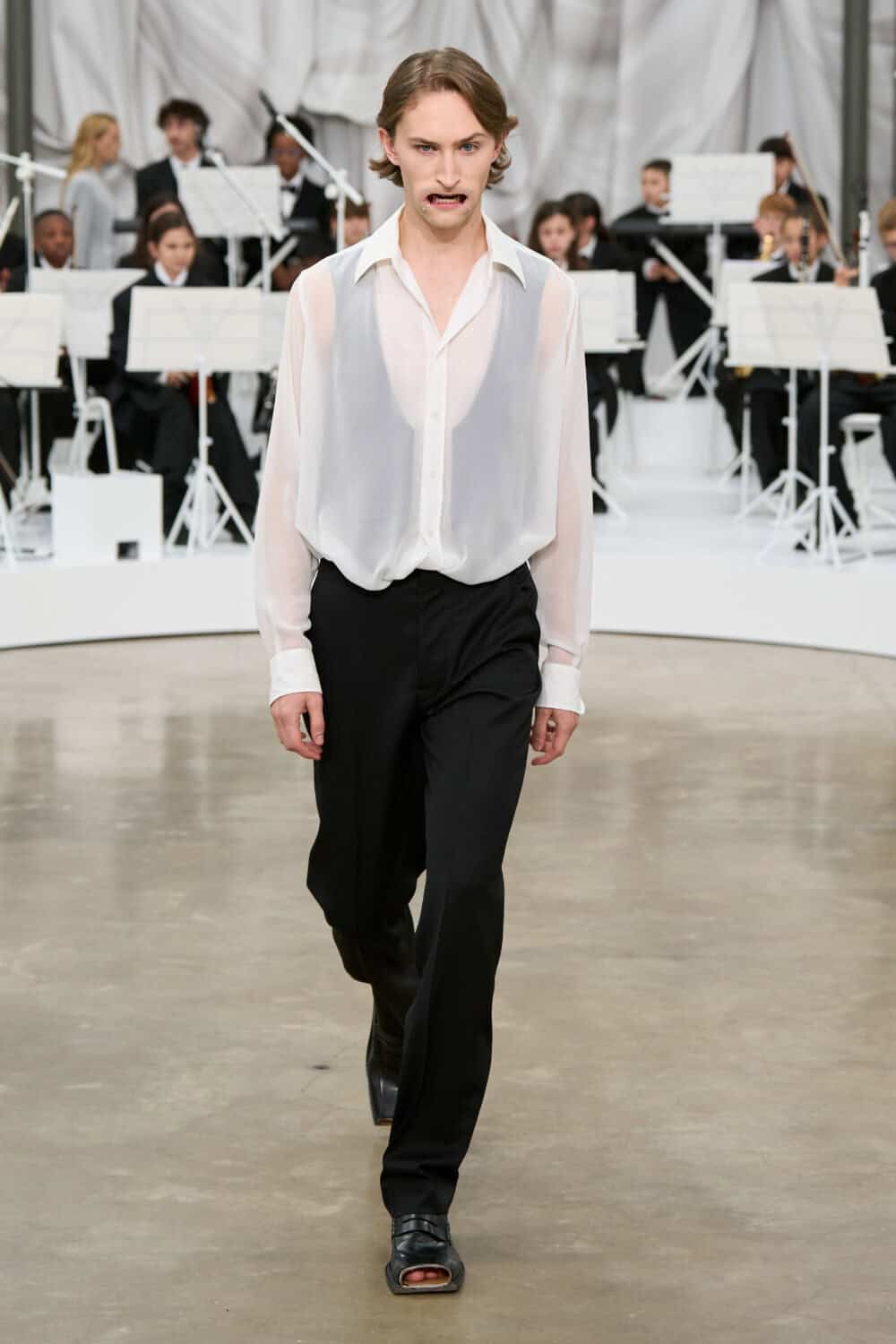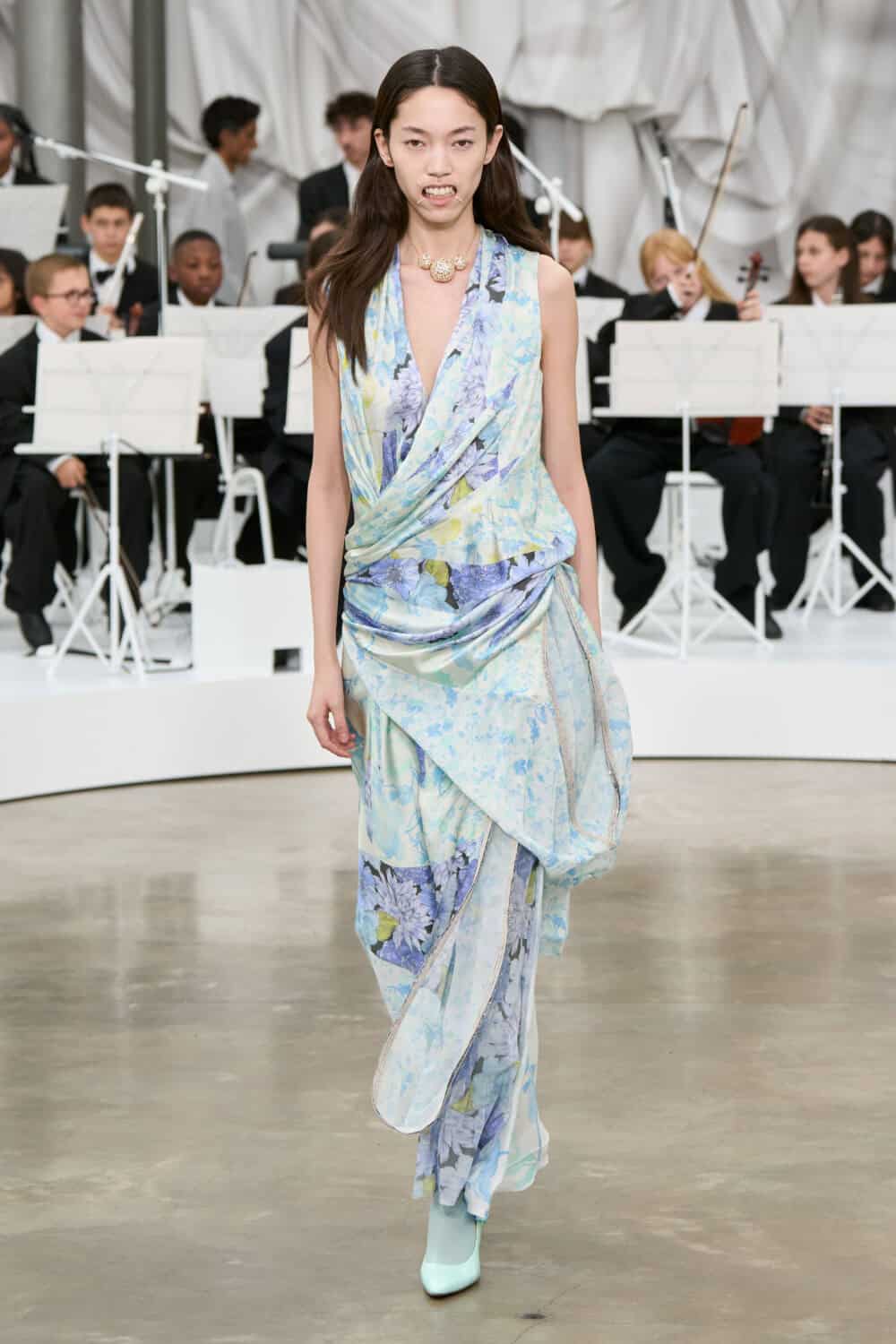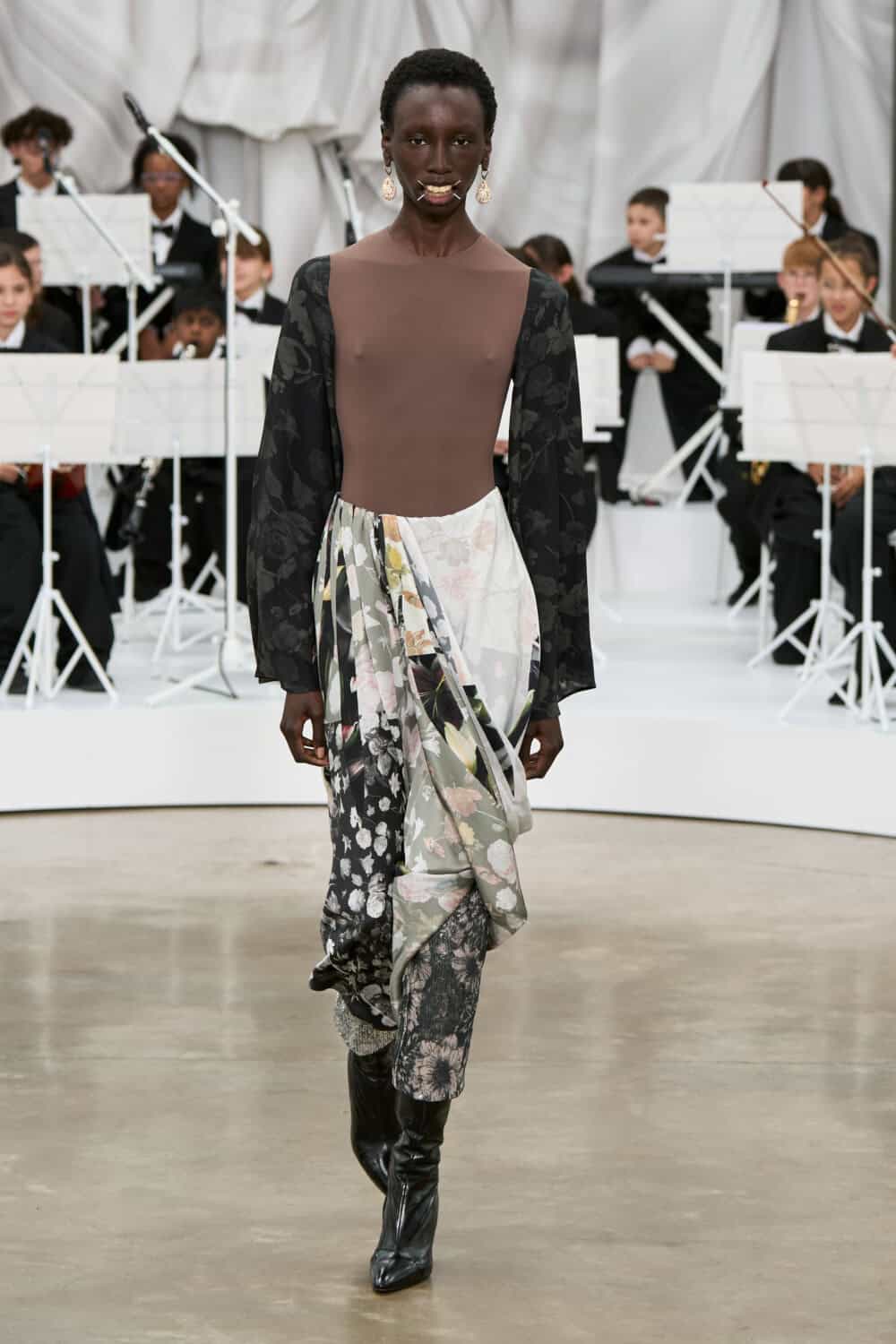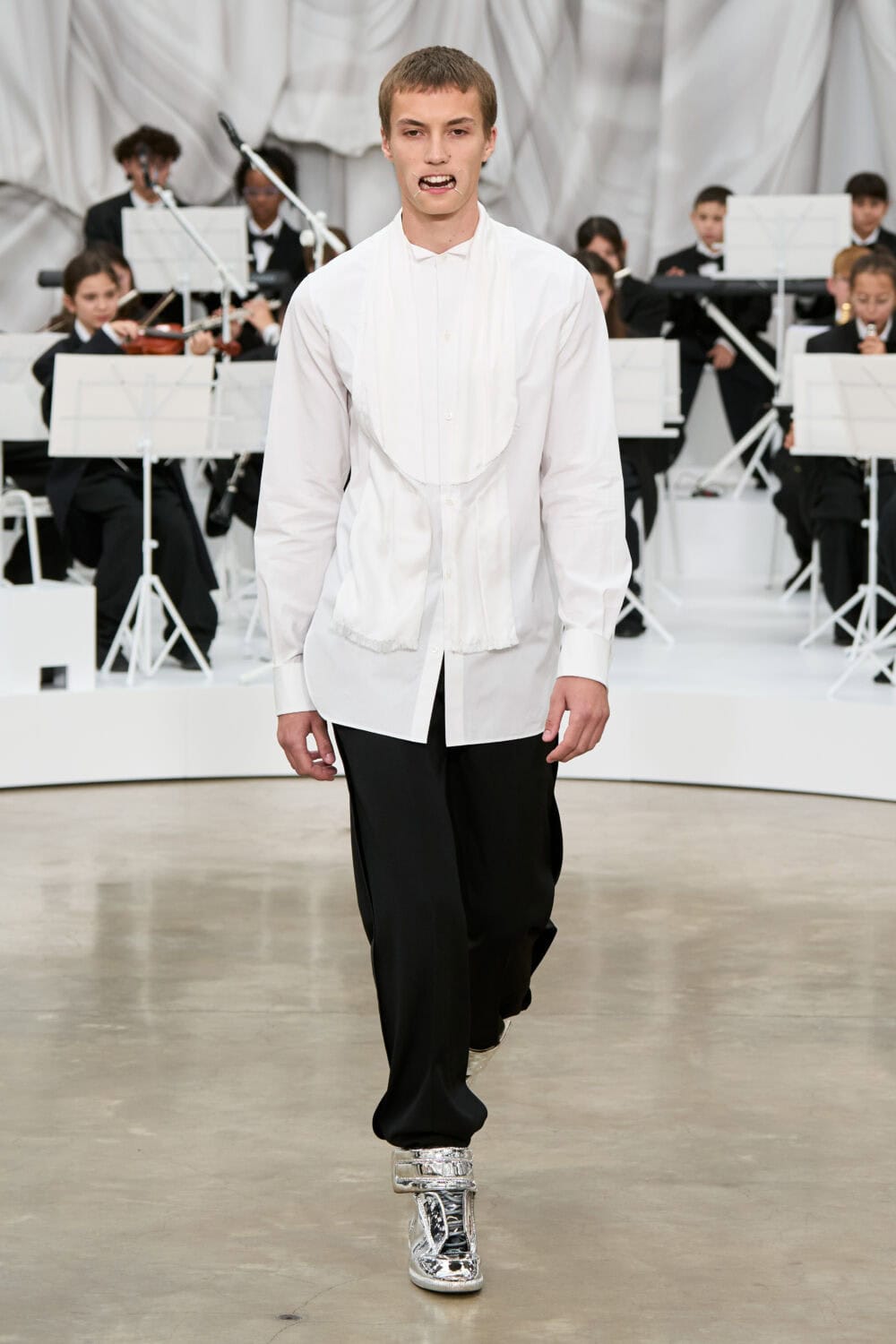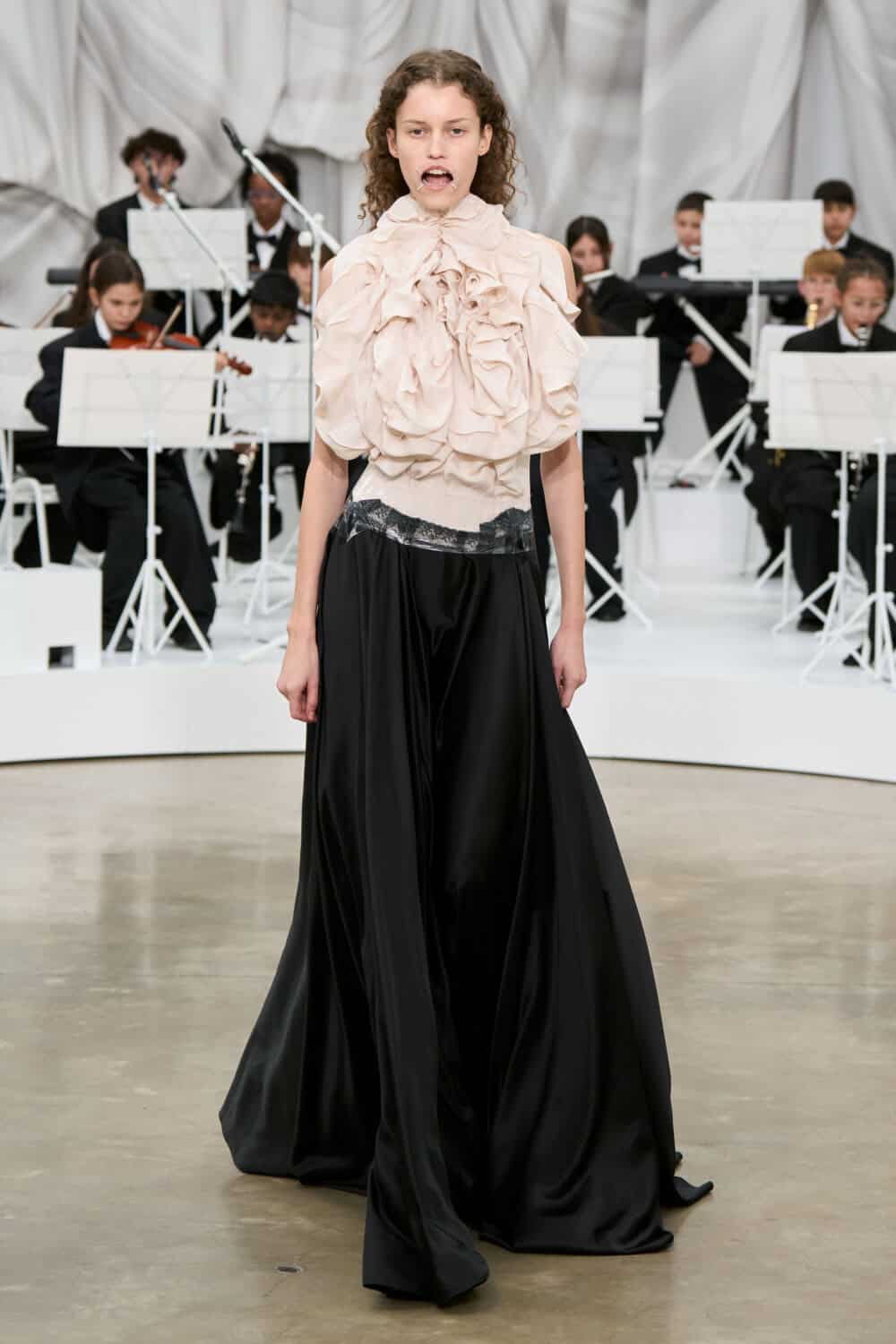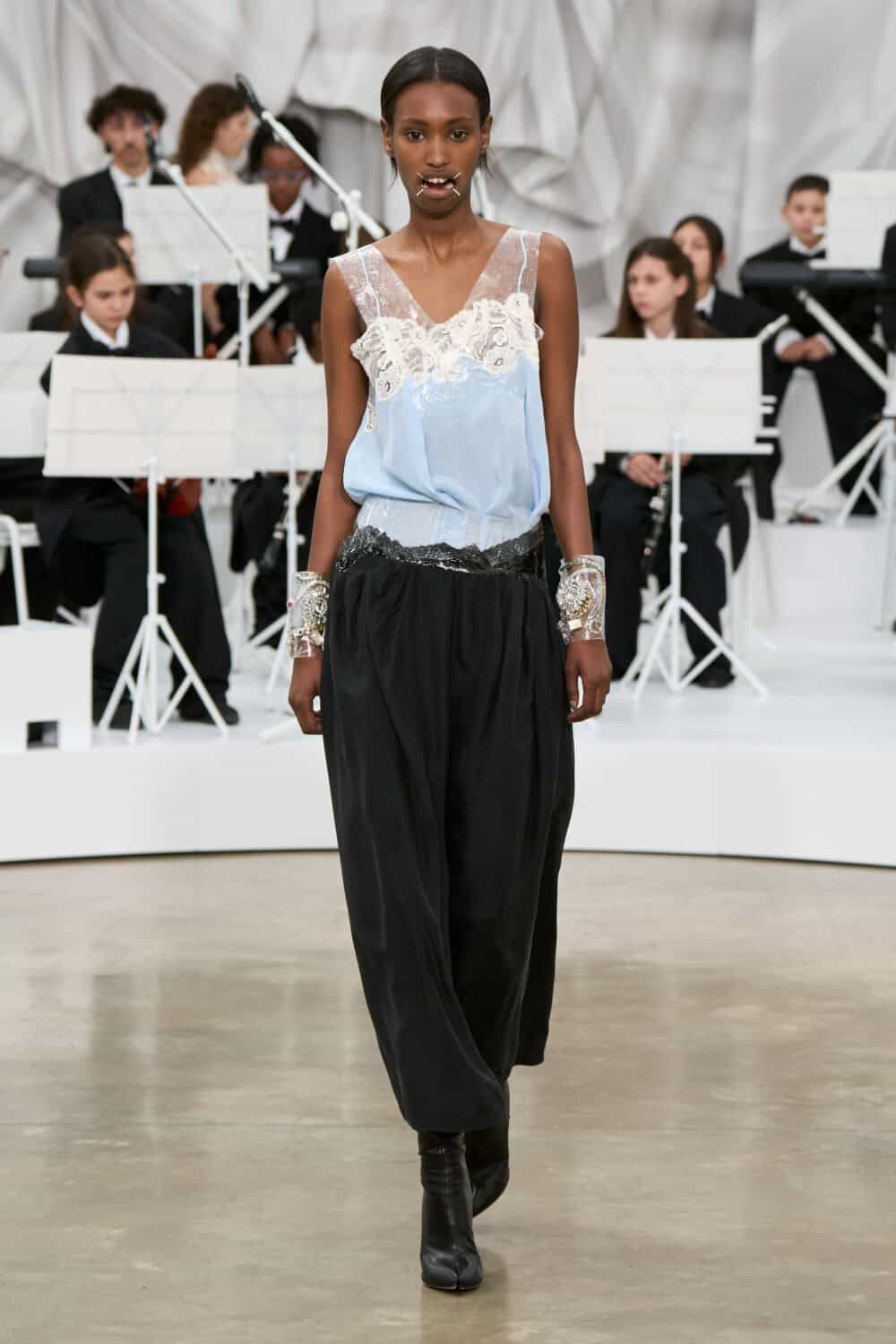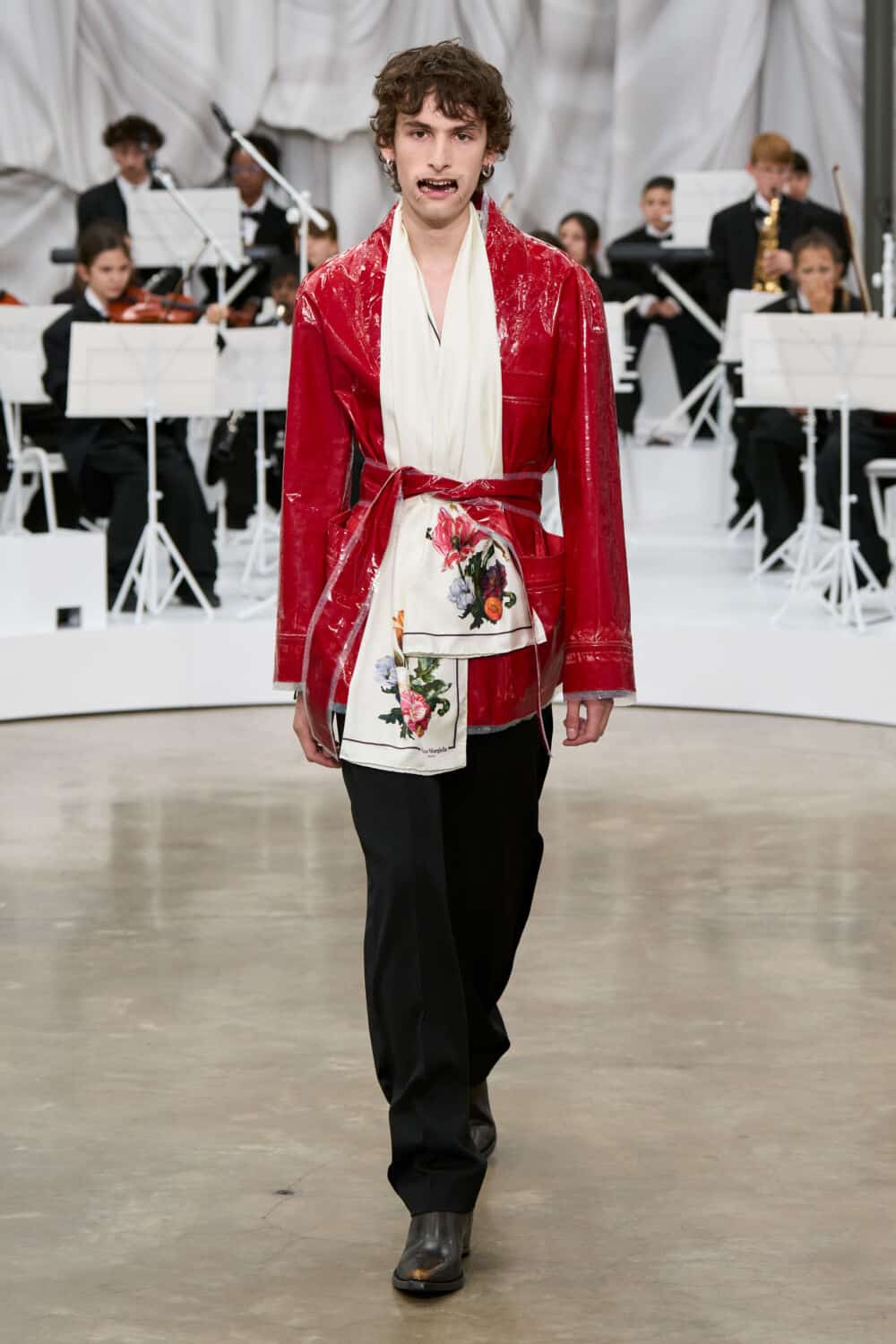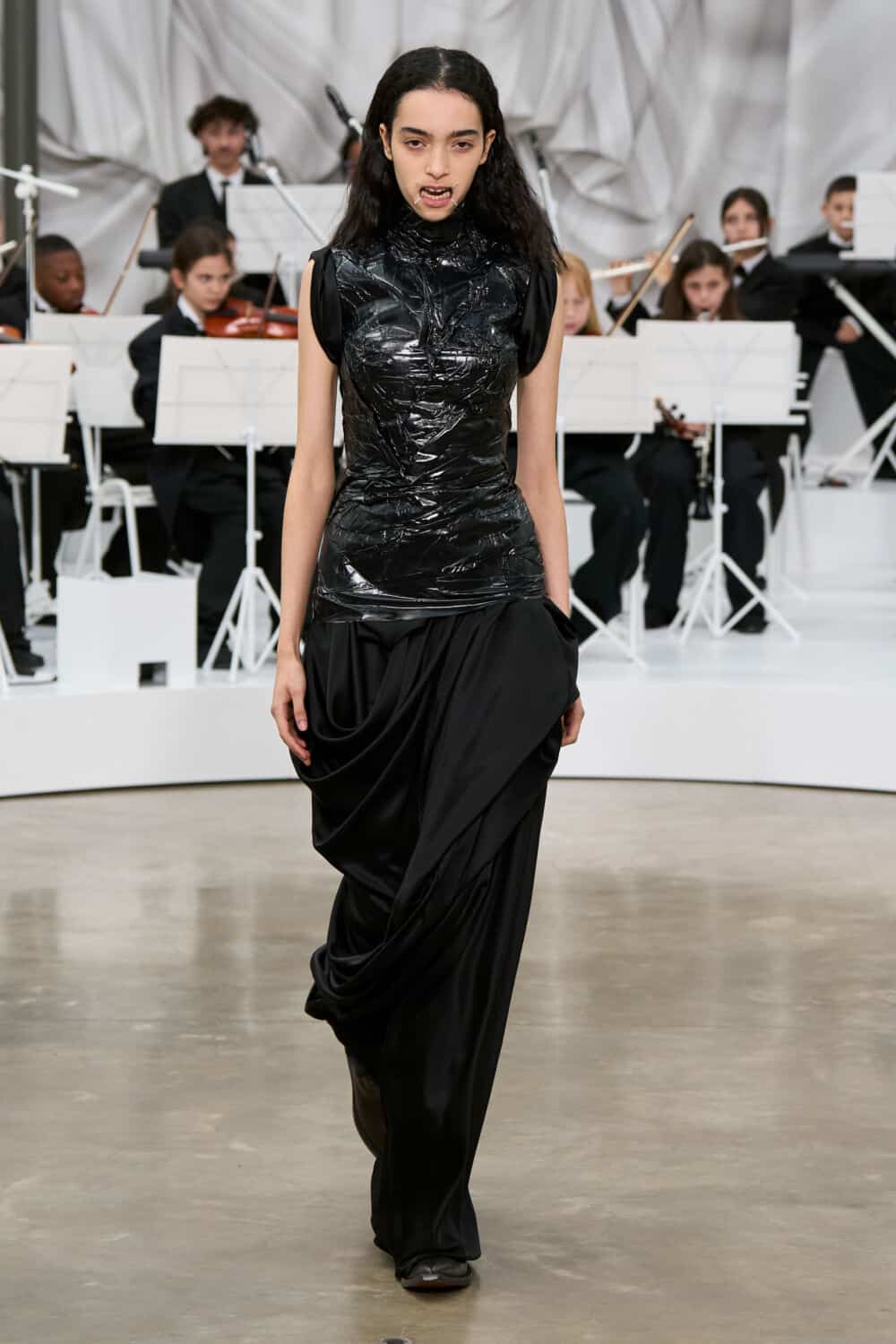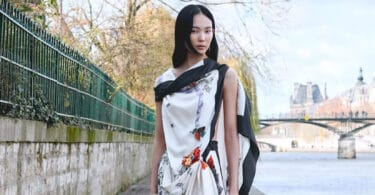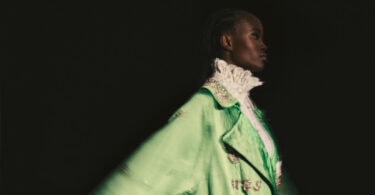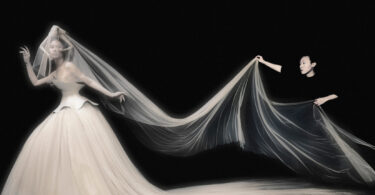From Glenn Martens‘ co-ed debut ready-to-wear for Margiela, was every bit as fearless as his couture.
But before we talk about fashion, first, a cute moment: a children’s orchestra took to the stage. Wearing black suits that were too big, they tuned up and then began, plinking, plonking and kettle drumming their way through classical hits by Strauss, Tchaikovsky and Mozart – the odd bum note added to the charm.
Martens, by contrast was in no mood to compromise. He’s working to establish his own Margiela silhouettes – a repertoire of distinctive cuts, finishes and fashion gestures that will define his era at the house.
The first of those came with his approach to tailoring. Opening the show, a collarless leather coat fastened with ties, worn with nothing but a pair of leather jeans, the coat was modelled on the simple blouse blanche that is the uniform of everyone who works at the house. Cut like a scooping tuxedo waistcoat at the front, it also bore the new Margiela shoulder construction, sharply rounded with a dart, with the armhole tracing the line of the socket. That same tuxedo front and shoulder shape appeared across mens and women’s pieces in leather, wool and especially denim. McQueen had a signature shoulder shape, so did Saint Laurent and Givenchy so why not Glenn? It showed Martens is serious about silhouette and the importance of tailoring to this house.
Speaking of silhouette, he elongated it, with drop crotches so low on jeans and tailoring that trousers almost looked like skirts.
He explored the Margiela cannon in his own way. Suiting came shrouded in a layer of thin lining material – a signature fabric of this house. Other pieces were “plasticised” using what looked like masking tape for coats and on the bodice of lingerie dresses dress. Upcycled costume jewellery was also plasticised and encrusted onto a top. Vintage lingerie slips were collaged onto tailoring. Elements of his debut Artisanal show were adapted for ready to wear with a peeling wall paper print applied to knits. The models lips were held in a wide grimace by mouth jewellery which mimicked the four corner stitches of the Maison Margiela label to make they all look the same (this is the house where anonymity is a super power) but also to cleverly brand each one of them.
After the romanticism of Galliano’s years at the house, this felt more visceral and a return, of sorts to the earlier, grungy, upcycled, renegade look of the brand’s early days when every cool creature wore Margiela.
Photography courtesy of Maison Margiela.



